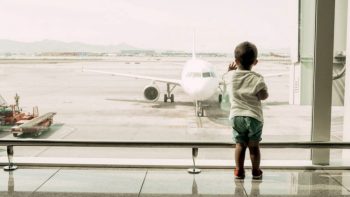Communicate in an uncertain context
#istayontheground , #flygskam … As many hashtags as you need to encourage people familiar with air transport to favor a less polluting means of transport. Social networks are today the scene of many “anti-aircraft” campaigns which denounce those who still use the plane and who seek to raise awareness of our ecological consciences by communicating scientific information on the weight and impact of aeronautics. .
It is thanks to communication tools and media that these “anti-aviation” campaigns have gained momentum. For example, the use of Bernard Arnault’s private jet is criticized. Similarly, Kylian Mbappé is attacked when he laughs in front of a journalist who asks him why the team does not favor the train instead.
Communication therefore seems to be in favor of the morally correct, and today it is ecology that takes precedence. The sector then suffers from a very poor image. The stakes are high: how to communicate on the aviation sector at a time of “anti-aviation” influence where ecology is essential?

How have communication campaigns tarnished the image of aeronautics?
The ecological alarm is sounding, more ecological campaigns are being carried out on social networks. Greta Thunberg exemplifies this perfectly; Committed and militant, she is a major spokesperson in the fight against global warming.
Thus, when she wishes to join the Davos forum (Switzerland) from Sweden by rail, she encourages and publicly expresses that flying is no longer possible. The same applies when the mayor of Poitiers says: “aviation should no longer be a dream for children”.
All this creates a real community, which, through social media, denounces aviation. She also points to a way of life in which aviation no longer has a place. The “celebrities” who show themselves in an aerial environment are no longer popular. This way of life appears to be an affront to the climate emergency and aviation seems to be the main culprit.
Aviation seems to be losing its former prestige . The trend is for those who know how to do without the plane. Hence the need to redefine its image and its communication campaigns thanks to marketing specific to aeronautics.

Information campaigns that feed some misinformation
However, these “anti-aviation” campaigns are often carried out by manipulating figures in order to better convey the guilt of aircraft users, or to aggravate the responsibility of the sector.
For example, the BonPote site, which seems to be a benchmark in terms of ecology by writing provocative and sharp articles, illegitimately compares aviation to the train. Nevertheless, these data are often incomparable, thus favoring the train at the expense of the plane.
Therefore, it seems that individuals, in general, overestimate the share of air transport in the overall environmental impact. According to Les Carnets de la Chaire Pégase , 90% of respondents to the survey exaggerate the share of air transport in global CO2 emissions (the file here). There is a gap between reality and the perception of the French as to the aircraft/environment relationship. To restore this gap is to carry out precise communication campaigns.
Aviation, a sector of progress that must communicate
This gap in perception almost seems to erase the technical progress of the aviation sector. Remember, this industry has grown exponentially:
- 1913: first flight of the Caudron G3
- 1986: first flight of the Rafale A

In 73 years, the evolution is dazzling. So we can hope for the same for the engineering of hydrogen or electric engines. Let us observe the birth of many Start-Ups advocating carbon-free aviation such as Aura Aero or Blue Spirit Aero.
Aviation is also the only industry to have a global organization that manages and sets rules (including environmental impact), such as the International Civil Aviation Organization since the 2000s (ICAO).
And yet, the airline is struggling to restore its image. Communication still needs to give new impetus. Follow our advice for communicating in the aeronautics sector.
Communicate to restore trust
Transparency
This may be the key word in this recovery strategy. You have to think about positive marketing that would have a positive impact both ecologically and socially. It is first of all to show honesty by recognizing the imperfections of the sector, but also to respect its customers by sharing the real progress of aviation, without greenwashing. If we have seen that there was a gap between the perceptions of individuals and reality, it is through knowledge and transparency that it will be reduced. It is a means of communicating on the actions taken by the industry.
How ?
Well, through informative communications strategies, also real-time monitoring of progress that contributes positively to the industrial chain. It is a means of integrating external stakeholders. Some companies are already doing this, like British Airways and its monthly newsletter with developments, figures and other data concerning the environmental footprint of their aircraft.
Removing the guilt from customers means seducing them, including them in an informative, transparent and active communication process. Because what if demand suddenly collapses? What if no longer flying becomes the norm?
Convincing passengers means communicating with them!

Escadrille can help
The aeronautics sector is one of ESCadrille’s areas of expertise. Knowing the image that is sent back, and, de facto, thinking about an appropriate strategy is important for a company in the sector. We are able to help you with an image study, notoriety and/or a communication strategy . The objective is to rigorously analyze the image of companies operating in a market that is struggling to enhance its image. Following this, we propose a communication strategy to rethink your model.
Aviation is at the dawn of a new golden age, but does it still have to succeed in convincing the world?
The key ?
Communication.
